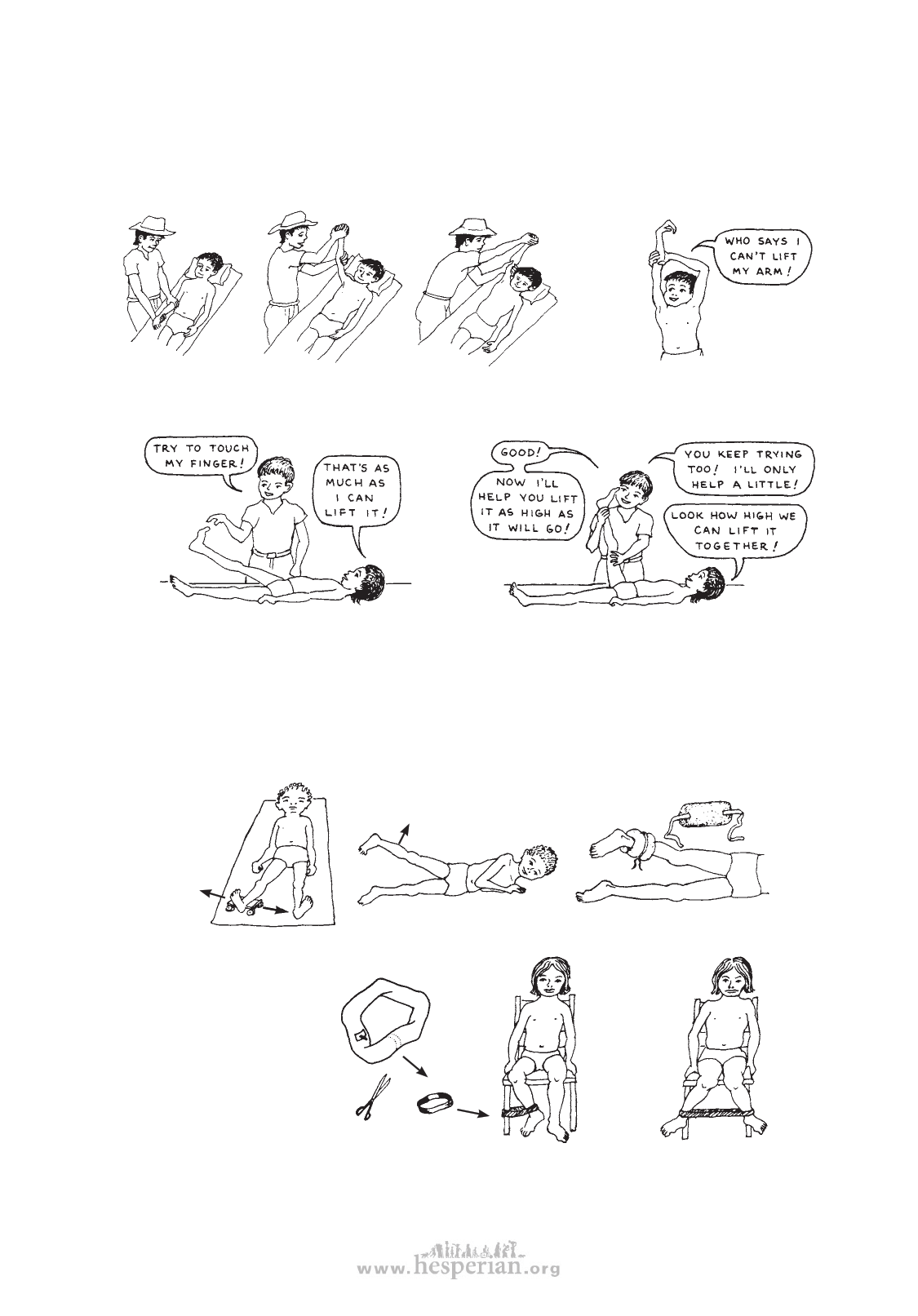
THERE ARE 3 MAIN WAYS OF DOING
RANGE-OF-MOTION EXERCISES
1. Passive exercise. If the child cannot move the limb
at all, either you can do it for him...
EXERCISES 373
or he can move the limb
through its full range with
another part of his body.
2. A ssisted exercise. If the child has enough strength to move the affected part of her
body a little, have her move it as far as she can. Then help her the rest of the way.
3. A ctive exercise. If the child has enough strength to move the body part by itself
through its full, normal range of motion, then he can do the exercises without
assistance, or ‘actively’. When the child can do it, active exercise is usually best,
because it also helps maintain or increase strength.
If muscle strength is poor, have the
child move his limb while in a
position so that he does not have to
lift its weight.
If necessary,
support the limb
with your hands,
in a sling, or on
a small roller
board.
If he can lift the weight of his
limb through its full range of
motion, let him exercise in a
position to do it. For example, he
can lie on his side and lift his leg
up sideways.
If he can lift the limb’s weight easily,
add resistance by pushing against the
limb or by tying a sandbag to it. This
helps strengthen the muscles for that
motion.
cloth bag
filled with
sand
As the child gains strength, gradually increase resistance (add more weight).
For many exercises,
resistance can be added
with stretch bands. Cut
rubber bands from an old
inner tube. The wider the
band, the more resistance
it will give.
Twist the
leg in
(and the
hip out).
Twis t the
leg out
(and the
hip in).
This child is doing range-of-motion and strengthening
exercises at the same time.
disabled village children